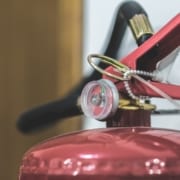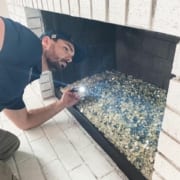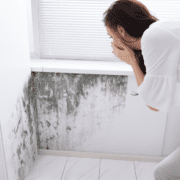I’m willing to bet the vast majority of home owners do not know what type of fire extinguisher is in their home. In fact only about ten percent of the homes I inspect even have fire extinguishers. There are two places in the home that should have one installed, the kitchen and the garage. Let’s face it, shit happens. And when it does you’re going to wish you were prepared.
There are four types of fire extinguishers that are appropriate for home use and they are categorized by letters. A type fire extinguishers are designed to put out paper and trash fires. B type fire extinguishers are designed to put out liquid or fuel fires. C type fire extinguishers are utilized for electrical fires. Lastly D type fire extinguishers put out metal fires. The typical fire extinguishers you are going to find at home improvement stores are multipurpose extinguishers called ABC fire extinguishers. You guessed it, they are supposed to be used on all types of fires except for metal fires and are the best type of extinguisher to have in a residential setting.
If you own a fire extinguisher (and you should), I recommend periodically inspecting it for serviceability. This is very easy to do and only takes a minute.
Step one: Make sure there are no dents or bulges on the canister body.
Step two: Verify that the nozzle is not damaged or clogged.
Step three: Check that the needle on the pressure gauge is in the green section.
Step four: Make sure the safety pin or seal is securely in place on the discharge handle.
When you install a fire extinguisher in your home or garage, make sure it is readily accessible and in a conspicuous location. I feel it’s best everyone that lives in the home should be thought how to properly utilize the extinguishers that are at the home. Fire extinguisher training can be obtained at any local fire department.



